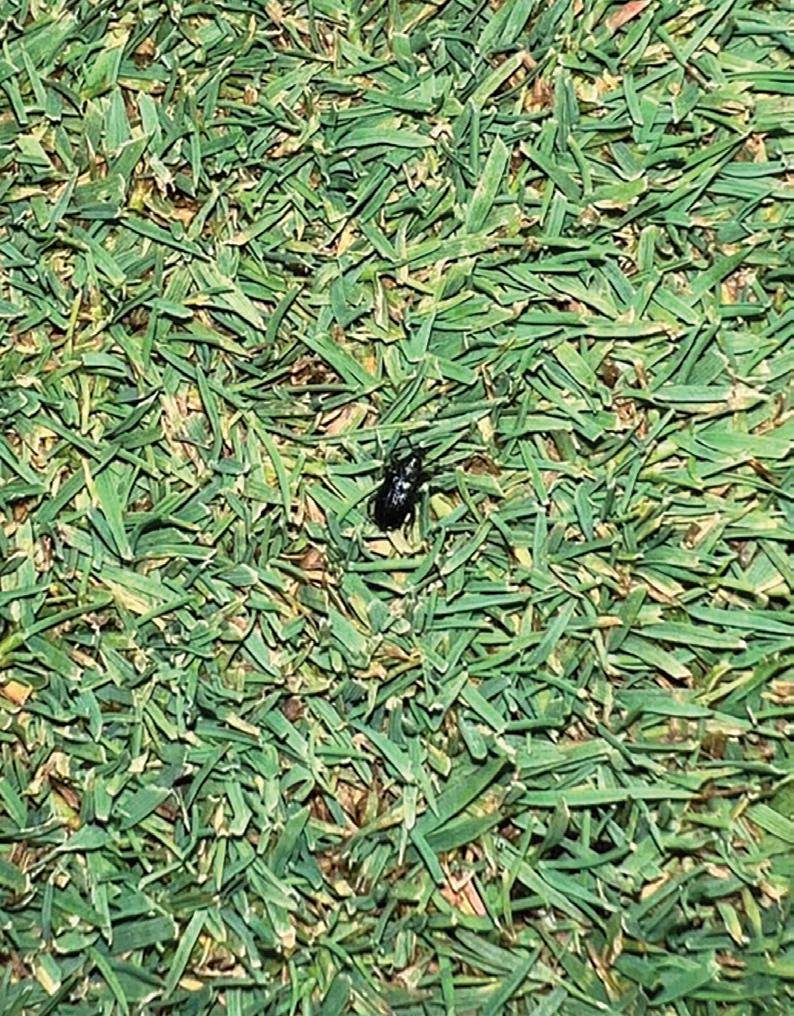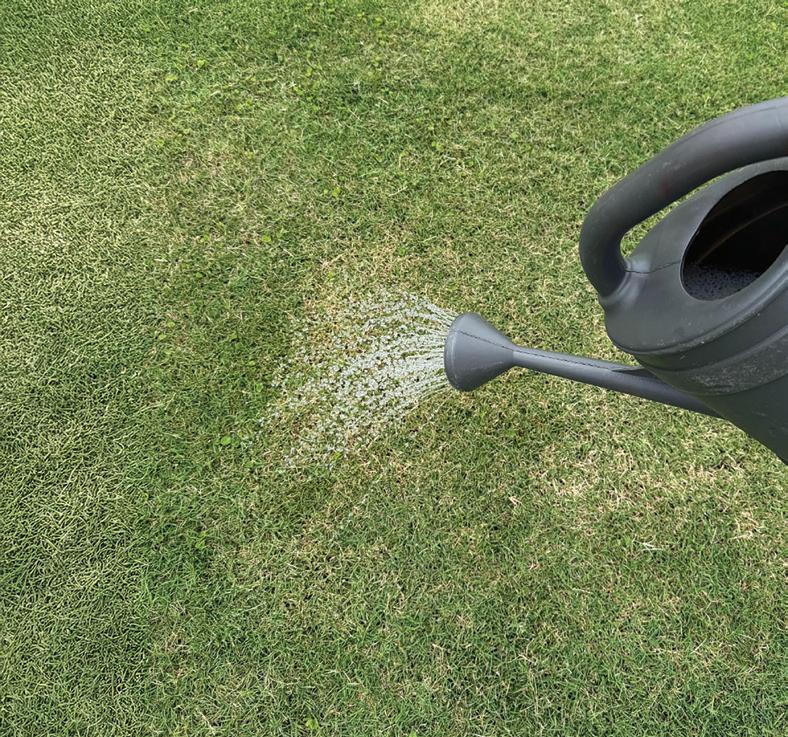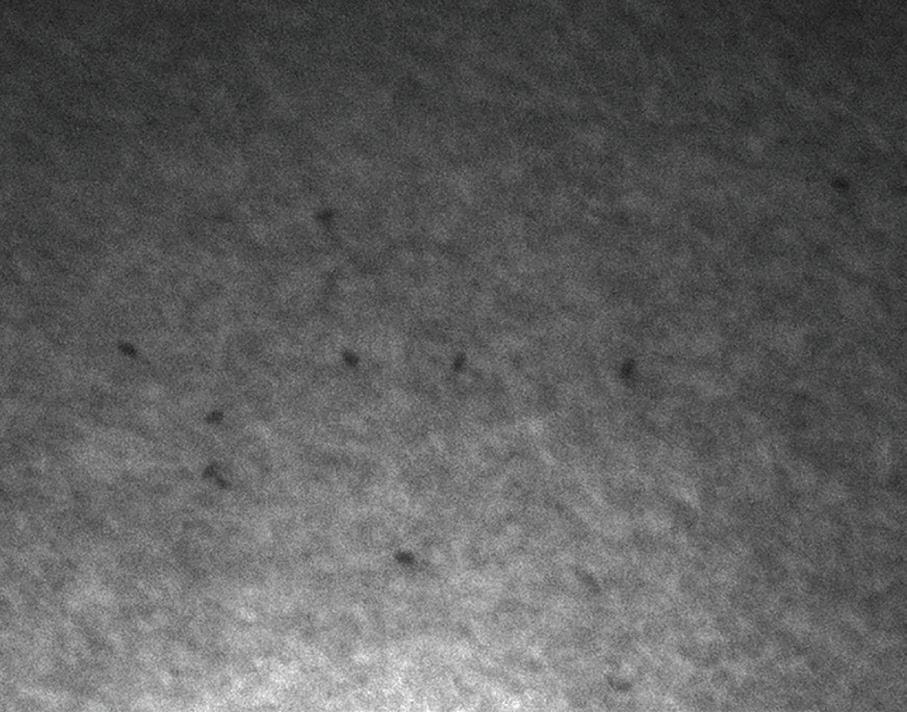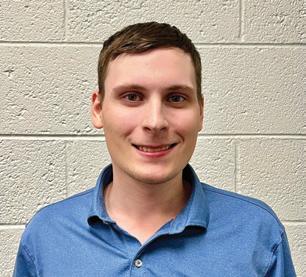
4 minute read
NCSU Student Corner
Enhancing Annual Bluegrass Weevil Monitoring and Detection
By Gram Grant
The annual bluegrass weevil (Listronotus maculicollis; ABW; Fig. 1) is a destructive, cool-season turfgrass insect pest on golf courses and sod farms in the eastern US and Canada. In western North Carolina, ABW feeds and reproduces on annual bluegrass (Poa annua ) and creeping bentgrass ( Agrostis stolonifera ). Current monitoring methods for ABW rely on applying soap flushes (15 mL dish detergent mixed in 4L of water) to infested areas, forcing adults to the surface where they can be collected and counted (Fig. 2). Tracking weekly adult counts via soap flush provides an application window for adulticides when adult activity is at its peak. However, this sampling method has several limitations. Soap flush sampling generally occurs on previously infested areas and largely ignores new potential hotspots within a golf course. This method is further constrained by the time and labor demands limiting the size and number of areas that can be sampled. As a result, infestations may go undetected if damage has yet to appear or the area is not sampled. Improving ABW monitoring techniques to encompass both previously unsampled and larger areas can provide a better understanding of general ABW adult activity and location. Sampling a greater area creates counts of adult weevils closer to the actual population size, accounts for variation in density between areas, and reveals the true distribution of ABW infestation. My research aims to improve current ABW monitoring programs by utilizing unmanned aerial systems and computer vision technology to track adult ABW surface activity.


ABW adults are nocturnal and emerge from the soil to crawl through the turfgrass canopy approximately 30 minuets after sunset. They remain active on the surface for up to six hours depending on temperature and rainfall. Investigating methods for ABW detection at night can improve and narrow insecticide application windows by identifying high-activity periods and locations. For this research, turfgrass canopy surface images were captured in the near-infrared spectrum (NIR). NIR imaging captures light in the 700–1400nm wavelength, visualizing the reflectance of NIR light instead of visible light. Objects that reflect NIR light appear in varying shades of gray while images that do not reflect NIR light appear black. In this study, images of weevils on turfgrass display the turfgrass in shades of gray while ABW appear as dark black spots (Fig. 3). Using computer vision modeling for small object detection these high contrast images are used to rapidly count the number of ABW present in images. Each image captured displays an approximately 3.5 ft2 area of the turfgrass canopy surface.

The initial model iteration was developed by placing pinned ABW within a creeping bentgrass stand maintained at fairway mowing height. In each trial, ten pinned ABW adults were placed at random at the North Carolina State University Lake Wheeler Turfgrass Field Laboratory. To capture NIR images, a DJI Mavic 3M (drone) was fitted with a custom illumination system consisting of 18 NIR LED lights. This provided adequate illumination of the turfgrass surface and clear imaging of ABW. The modified drone was flown approximately two to three feet above the ground and images of ABW on the turfgrass surface were captured. Images were then used to train a custom computer vision model for ABW detection. Preliminary results indicate ABW are easily imaged in the NIR spectrum, and that the custom trained computer vision model can accurately detect and count the number of ABW present. Using the current version of the computer vision model 96% of ABW present, or 1993 detections out of 2069 total ABW, in an image set were detected. As this research continues and the computer vision model is further refined with field collected images of live weevils, this value is expected to increase.
Implementation of fairway aerial scanning will substantially improve ABW sampling and detection methods. By sampling large areas of turfgrass, ABW infestations can be tracked more accurately and over an entire course, which may also identify new areas of infestation. This technique also may be adapted for monitoring other nocturnal surface feeding turfgrass pests, such as billbugs and several Scarabaeidae pests. With this work, we are integrating new technologies with traditional pest tracking methods to identify new area and refine timing for insect pest management.






